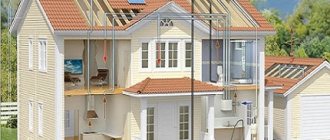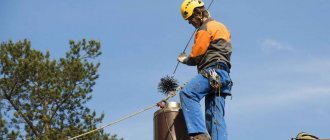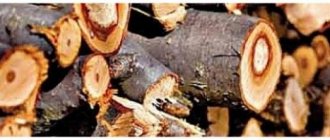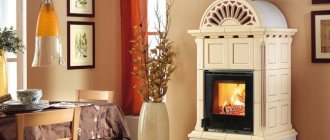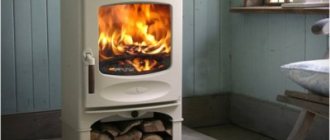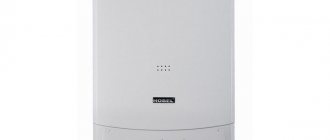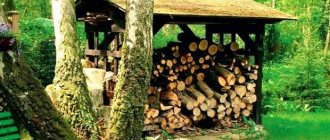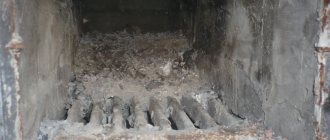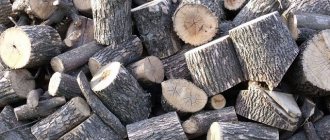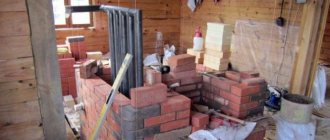- Cast iron
The functioning of stoves indoors or in a sauna directly depends on the installed chimney. From it, oxygen-saturated air is directed into the firebox, which is required to maintain stable combustion. The resulting smoke, soot and processed gases are removed from the room through a pipe. To regulate the combustion process and prevent heat loss, they resort to installing furnace rotary dampers for chimneys made of stainless steel and other materials.
Functions, purpose and characteristics
This special partition is a mandatory part of the channels responsible for the smoke exhaust. Its presence guarantees the safe operation of the installed stove or fireplace, as it ensures the fire resistance of the entire heating system in the room. It completely duplicates the cross-section and area of the chimney lumen. When closing, seasonality should be taken into account, since in winter it is allowed to retract the damper half its length, and open it completely in summer. Solid overlap is prohibited.
Its maneuverability makes it possible to increase or decrease the pipe cross-section, which increases or decreases the air supply after the stove is fired, respectively.
Externally, this damper looks like a small metal plate, which is adjusted using a handle located outside. This provides manual adjustment, allowing the owner to independently change the position of the partition. Regardless of the type of structure, it is mounted by placing it inside a pipe and then securing it with a clamp.
The chimney damper is responsible for several functions:
- Increases traction in adverse weather.
- Injects air that increases combustion power.
- Reduces draft in windy weather.
- Prevents heat leakage when heating the heater.
- Reduces combustion intensity, allowing you to save on fuel.
DIY rotary design
This type of gate is made from steel sheets of the same size and steel angles as follows:
In order for a fireplace or sauna stove to operate smoothly and safely, it is necessary to correctly select and install the components that affect the operation of the heating system. The guarantor of fire safety of stove heating is a damper in the bathhouse, the installation of which allows you to regulate the draft force and increase the efficiency of the stove. In this case, the fuel will burn completely, while its consumption is relatively small.
Source
How is traction adjusted?
Adjustment is the most important aspect of operating furnace equipment. With proper control of this process, you can achieve the highest efficiency from the device, as well as save the health of the residents of the house. Even if the partition is completely blocked, there is still a gap for the movement of exhaust gases. It must be closed exclusively in the final part of the firebox (after the wood has finished burning and an ash layer has formed on it). According to fire safety requirements, the damper must have a small hole through which weak gas exchange occurs.
Considering the importance of this element, it is necessary to choose trusted manufacturers. Such as the manufacturing company Ferrum.
Rules for firing solid fuel units
Did you know that a solid fuel unit is a heating boiler, fireplace, stove, which are found in every second country house today. But not every owner of a fireplace or stove knows how to properly burn this unit with wood.
1. Before starting the solid fuel unit, it is necessary to open the damper (gate, view), which is usually located in the body of the fireplace of the stove or boiler, as well as on the horizontal or vertical section of the chimney.
2. On a solid fuel unit, fully open the ash pan, check for the presence of ash in the ash pan, and if necessary, clean the ash pan.
3. Before lighting the unit, it is necessary to warm up the chimney, i.e., insert a lit newspaper into the chimney or into the firebox of the unit. If the flame does not catch (jumps) during ignition, repeat the operation several times until the jumping effect is obtained.
4. After removing the cold air plug from the chimney, you can start the unit.
5. Application for kindling solid fuel units L.V.Zh. or other chemicals PROHIBITED! (volumetric explosion effect).
6. For uninterrupted operation of solid fuel units, an influx of outside air into the room where the heating equipment is located is necessary.
7. Dry firewood is placed in the firebox of the unit: birch, alder, aspen, beech, oak and other hardwoods. The number of logs is no more than 5 pieces, length from 30 to 50 cm (more is possible if the size of the firebox allows). The volume of the log is 1/8 of a circle, the diameter of the log log is no more than 20 cm.
- Dry firewood is firewood that has been sitting outside for at least two years. Before burning, the daily allowance of firewood should be kept in a warm room for 24 hours.
- Unseasoned firewood, shelf life outside is 1 year. The daily dose should be stored for 4 days.
8. When igniting the unit itself, you can use ordinary newspapers, birch bark or wood chips. After the fire has ignited, it is necessary to close the firebox door to prevent the flame from escaping from the unit (except for open fireplaces).
9. According to regulatory documentation, it is prohibited to place firewood in the firebox in excess of 2/3 of the volume of the firebox.
10. When obtaining a stable flame (stable combustion), it is necessary to adjust the blower damper in order to select the optimal combustion mode.
11. In the event of a “super draft” effect, when the flame level exceeds the height of 30 - 35 cm with the blower damper closed, it is necessary to use a damper (view, damper) on the chimney.
12. Adding firewood to the firebox of the unit is carried out after the firewood in the firebox turns into coals of no more than 5 pieces in accordance with clause 7.
13. At the end of the combustion process, when there are only coals left in the firebox and there are no flames on them, you can close the ash damper and the damper (view, damper) on the chimney.
14. According to regulatory documentation, cleaning of solid fuel units is carried out once a quarter (3 months) by a specialized organization of chimney sweeps. Following these simple rules will allow you to enjoy using fireplaces, stoves, and boilers.
This is a list of general rules. Different solid fuel units have their own individual combustion rules. Before using the unit, you must read the operating instructions.
PS I hope that our recommendations will help you in the safe operation of your fireplaces, stoves, and boilers.
For questions regarding combustion rules, please call: 8 (495) 991-60-79.
Types of valves for pipes
They come in two types: retractable and rotary. Based on the name, it becomes clear that their difference is the principle of operation. The first operates due to perpendicular movements of the partition relative to the chimney lumen. To increase traction, it moves back and completely leaves its boundaries, and to reduce the flow it will need to be pushed back. The second involves a rotating mechanism located inside the pipe.
Retractable
This type is considered a comfortable and effective method of traction control. Its main difference is its long service life, which is achieved due to the absence of temporary wear in the axial fastening areas. Due to this, it is possible to maintain the high quality and safety of the gate, even under unfavorable environmental conditions. But it is often possible to find ready-made additional structures for a metal skylight with an oval or rectangular hole.
Retractable type is also divided into:
- Simple - has the form of a rectangular groove mounted inside the passage. It contains a special plate responsible for opening the chimney.
- The unit is a ready-made unit, created as a retractable plate into which a pipe section is built. Its advantage is the ease of insertion, which significantly speeds up installation.
Rotary damper for chimney
The principle of its operation is based on the rotation of the partition around its axis. When turned counterclockwise at a right angle, the damper closes the air flow. If the turn is carried out in the opposite direction, then no obstacles are created in the path of the air. To regulate this process, you need to operate a special handle.
How to make a chimney damper with your own hands
It is better to make and install a damper yourself during the process of laying a fireplace or installing a metal chimney.
You can also make and install it if a steel chimney is already installed, but a damper was not provided in it. Depending on the diameter and cross-sectional shape of the chimney, the material used, a retractable damper and a butterfly valve can be made.
Note! For a brick chimney, a retractable rectangular damper on a special groove is better suited. For a metal pipe, you can choose any option.
Instructions for making a retractable gate
To make a simple retractable damper, sheets of galvanized or stainless steel with a thickness of 2-2.5 mm are required. Making guides around the perimeter of the chimney will require 6 mm thick wire.
We recommend that you read: How to bend a metal-plastic pipe manually or using tools
To complete the work you need equipment and tools:
- grinder or metal scissors;
- grinding disc for angle grinders;
- drills and files for metal;
- marker for marking.
It is advisable to do all the work on a special lathe or typesetting machine. If the shape of the chimney is rectangular, you can make the simplest gate damper by simply cutting a piece of sheet steel of the required size. It is recommended to weld the handle or drill a small hole for ease of adjustment of the gate.
Before starting work, we measure the area and cross-sectional shape of the chimney, and use a marker to make marks on a sheet of cardboard in accordance with them. To make the frame, we bend the wire in the shape of the letter P, the width and length coinciding with the cross-section of the chimney. Using a grinder, we cut out the flap using a cardboard template, and sand the edges with a sanding disc.
Important! The width of the wire frame should be 2-3 mm larger than the gate plate so that the damper moves freely and does not get stuck due to thermal expansion of the metal.
Instructions for making a throttle valve
Making a butterfly valve requires more tools and time. Most often this type of damper is used for metal chimneys for modern fireplaces and metal freestanding stoves.
Set of tools for work:
- Bulgarian;
- drill;
- pliers;
- welding machine;
- compass;
- roulette;
- marker for marking.
To make a gate, you need sheet steel up to 3 mm thick, a stainless steel pipe with an internal diameter of 6 mm, fasteners (bolts, nuts) 8 mm, and a metal rod.
- First, measure the internal diameter of the chimney pipe using a compass.
- According to it, draw a circle on sheet steel.
- Use a grinder to cut out a circle.
- Place the cut fragment into the pipe and check the tightness of the fit. If necessary, rework the valve with a grinding disc.
- Place a metal tube with a diameter of 6 cm on the circle in the center and make marks on it, retreating 3 mm from each side of the circle.
- Cut off the tube with a grinder.
- In the resulting pipe section, drill the threads to 6.8 mm on both sides.
- Drill holes in the steel circle for welding (one in the center, two 1 cm from the edge on opposite sides).
- Weld the threaded tube to the steel circle.
We recommend that you read: Polypropylene pipe reinforced with fiberglass - a guarantee of reliability
The slide valve is ready, all that remains is to install it in the chimney pipe.
Difference in models depending on material
Various materials can be used for the production of chimney valves: cast iron and steel. They have shown the most reliable performance characteristics, allowing them to be resistant to high temperatures.
Cast iron
Quite durable and long service life. Disadvantages:
- heavy weight, which increases the load on the structure;
- difficulties encountered during installation;
- in case of use in wet conditions - poor corrosion resistance.
Used in chimneys made of brick base.
Stainless steel
A device made from this material belongs to the universal category. Excellent for installation in stoves, fireplaces and chimneys made of brick (pre-lined with a stainless steel pipe) or metal.
Steel structures have a simpler appearance, but are not much inferior to cast iron in properties. Their significant advantage is their light weight, which reduces the load. In addition, they are mounted on all kinds of chimneys (rectangular and oval, heavy, made of brick, etc.). When choosing a damper for a furnace, you will need to take into account not only the operational properties, but also the overall interior of the room.
Which material is stronger
In addition to structural differences, gate valves differ based on the material used at the manufacturing stage. The only available solution is stainless steel. This is due to the fact that it does not deform under the influence of high temperatures, and also retains its original appearance and characteristics even after several years of active use.
Valves in stainless steel gate valves from the manufacturer Ferrum are fixed using argon welding on a rod 8 millimeters long. The presence of a reinforced spring ensures the design's reliability and durability.
How does the installation work?
The rotary damper for the chimney is installed as follows. The height of the product is determined by the craftsman based on the actual structure of the furnace. The minimum height is 0.9-1 meters from the floor, and the maximum is approximately 2 meters. As a rule, installation does not take more time and proceeds in several successive stages:
- Selecting the installation location and setting marks on the bricks that need to be trimmed.
- Cutting bricks using a grinder.
- Fixing the chimney partition with masonry mortar.
- Brickwork according to a row pattern.
Mounting the gate
If the chimney is made of brick, then installation work should be carried out no closer than 1 meter from the stove. To do this, the chimney must first be lined with a stainless steel chimney. This is the only way to avoid structural damage due to condensation and excessive soot deposited on the walls.
Since it is very difficult to make a gate valve for a chimney in a round pipe with your own hands, purchase rotary gate valves from trusted manufacturers who guarantee the quality and durability of their products.
Only a qualified specialist can correctly calculate the dimensions of all parts and select the best option for the chimney. The installation process itself, carried out by specialists, includes:
- Chimney laying carried out by a specialist (first 7-9 rows).
- Coating the top layer of bricks with a small amount of laying mortar.
- Frame placement.
- Applying the working solution for fixation.
- Continuation of masonry according to the previously described scheme.
The final step is to seal the existing cracks. This is a necessary measure, the implementation of which allows not to disturb the traction force and prevent carbon monoxide from penetrating inside.
Safety regulations
When the damper is completely closed, carbon monoxide enters the room - it is not visible, not heard, and sometimes there is no smell. An exception may be a valve with a lock. In a sauna stove, you should not close the damper until the wood has burned out and the coals are covered with a layer of ash.
When choosing the type of damper, take into account its disadvantages, for example, think that if you have a straight chimney, then it will be difficult for you to get rid of soot.
Before making the design and installing it yourself, consult a specialist who will calculate the draft level of your stove. For this, professionals use a special formula. Take care of yourself!
Installation in a brick pipe
The process is practically no different from the standard assembly of a finished kit. If installation work is carried out by a professional on a brick pipe, then the steps will be as follows:
- Laying down to the last layer of brick.
- Forming a pillow from clay, which cools slightly until it is soft and can be fixed.
- Laying the gate, accompanied by the application of slight pressure to place it in the clay mass.
- Re-placement of clay on the top layer and formation of a new brick row,
- Wait for it to dry and check the operation of the installation (if necessary, you can remove excess clay).
- Covering the resulting cracks.
If the pipe has already been installed, the technician will need to further disassemble it and only then proceed with the steps described above.
Knowing how to make a damper valve in a steel chimney pipe will allow you to entrust all the work to a specialist and not waste unnecessary nerves. And studying and becoming familiar with the main technologies, nuances and features of this process guarantees a high-quality installation check, ensuring the uninterrupted functioning of the smoke damper and the safe stay of people in a bathhouse or private house.
Self-installation of a gate valve
If you need to mount a damper for a brick kiln located in the house, you should do the following:
- first of all, lay out the first row of the chimney pipe from bricks;
- then make the next brick row and make a hole in it for a gate valve;
- In one of the bricks laid out in the second row, you need to create a groove for the handle for the valve of the fireplace or stove.
A groove is a recess or slot into which an object of a certain size can fit. This is a simple job that anyone can do.
The gate is also installed for heating boilers. It allows you to control the removal of gas particles, which leads to increased efficiency and economical consumption of fuel resources.
The slide damper is the main guarantee of fire safety when organizing stove heating; it is an essential part in the ventilation pipe, chimney and boiler.
